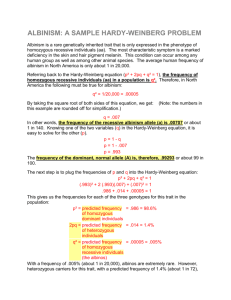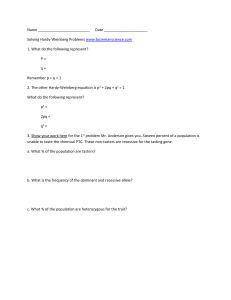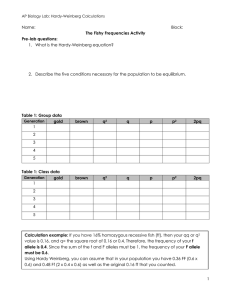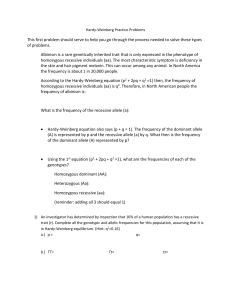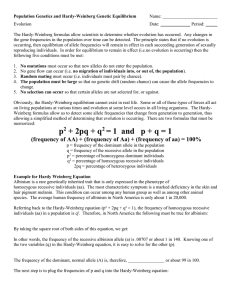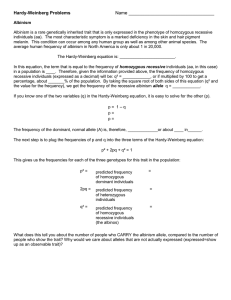Hardy-Weinberg Principle
advertisement
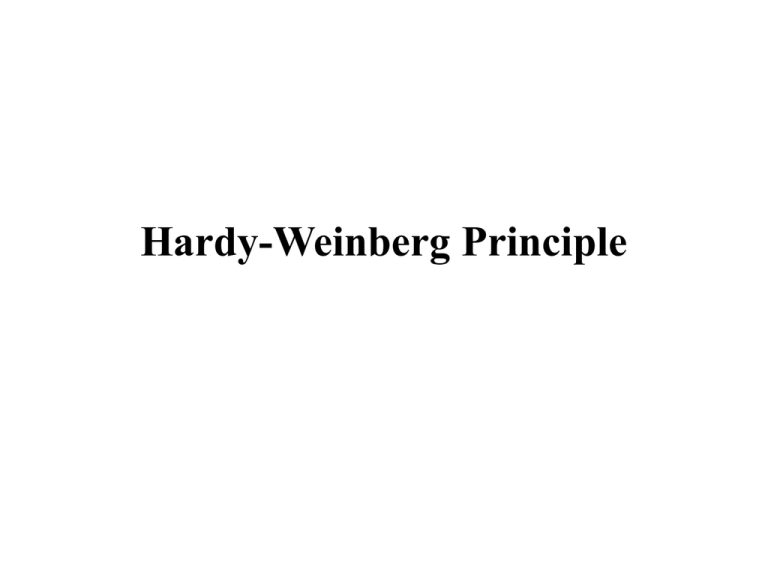
Hardy-Weinberg Principle Background Principle • Gene and allele frequencies in a randomly-breeding population remain constant from generation to generation unless specific disturbing influences are introduced • They are considered to be in equilibrium Disturbing influences • • • • • • Non-random mating Mutations Selection Limited population size Random genetic drift Gene flow • Hardy Weinberg equilibrium is impossible in nature • Deviation from the HardyWeinberg equilibrium denotes the evolution of a species HW Equation is derived using a punnett square Hardy-Weinberg Equilibrium Equation • Used to discover the probable genotype frequencies in a population and to track their changes from one generation to another p2 + 2pq + q2 = 1 p = frequency of the dominant allele q = frequency of the recessive allele • P2 = the predicted frequency of homozygous dominant individuals in a population • 2pq = predicted frequency of heterozygous individuals in a population • q2 = the predicted frequency of homozygous recessive individuals in a population Observation of phenotypes • It is usually only possible to know the frequency of homozygous recessive individuals • Individuals showing the dominant trait could either be homozygous or heterozygous ALBINISM: A SAMPLE HARDYWEINBERG PROBLEM • Albinism is a rare genetically inherited trait that is only expressed in the phenotype of homozygous recessive individuals (aa) • The average human frequency of albinism in North America is only about 1 in 20,000. Referring back to the Hardy-Weinberg equation (p² + 2pq + q² = 1), the frequency of homozygous recessive individuals (aa) in a population is q². Therefore, in North America the following must be true for albinism: q² = 1/20,000 = .00005 • By taking the square root of both sides of this equation, we get: q = .007 • In other words, the frequency of the recessive albinism allele (a) is .00707 • Knowing one of the two variables (q) in the HardyWeinberg equation, it is easy to solve for the other (p). p=1-q p = 1 - .007 p = .993 The frequency of the dominant, normal allele (A) is, therefore, .99293 or about 99 in 100. • The next step is to plug the frequencies of p and q into the Hardy-Weinberg equation: p² + 2pq + q² = 1 (.993)² + 2 (.993)(.007) + (.007)² = 1 .986 + .014 + .00005 = 1


